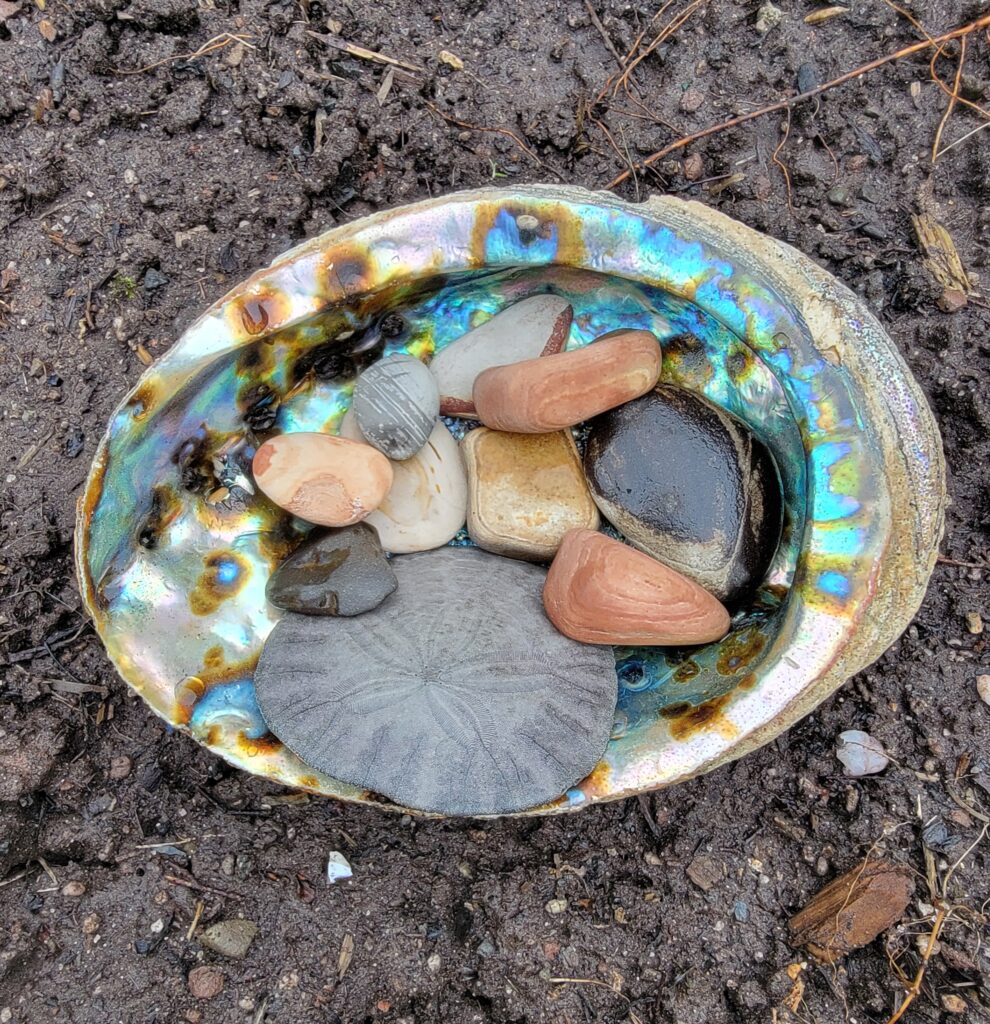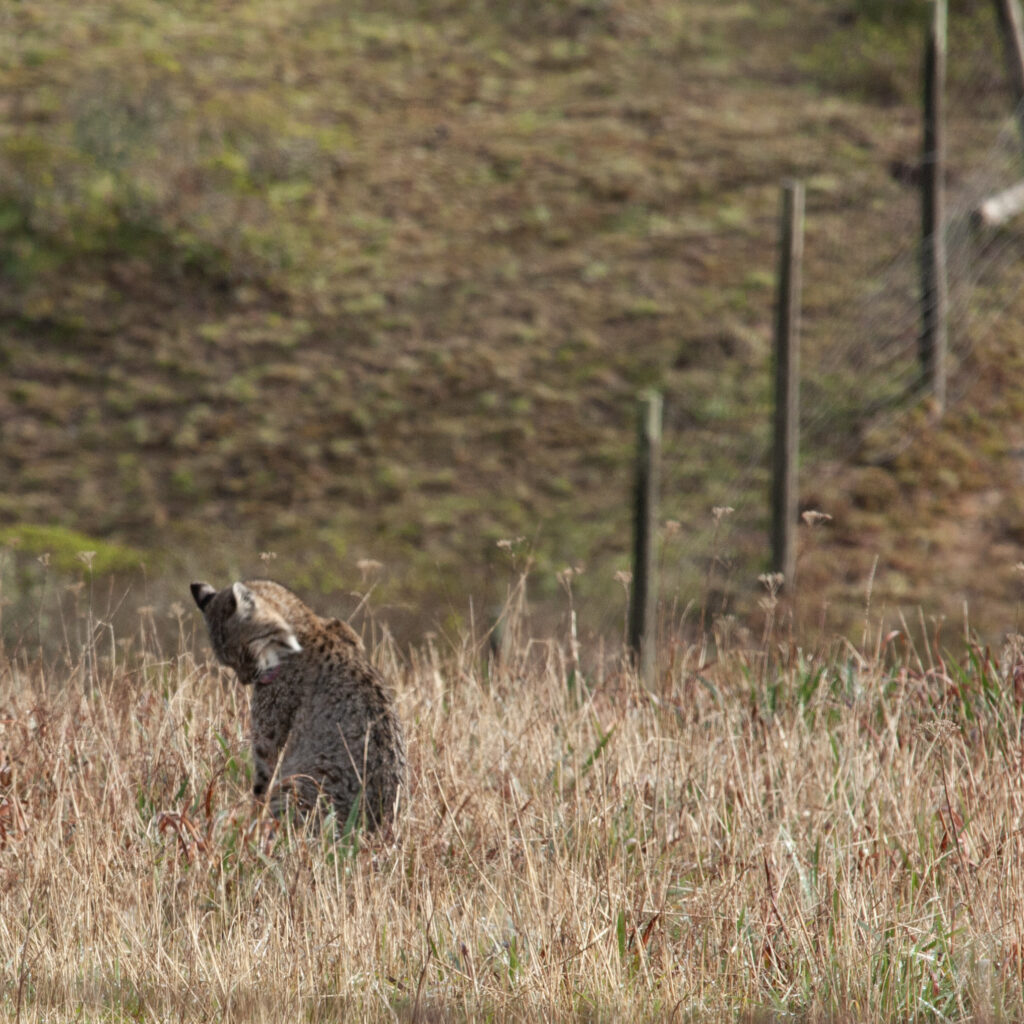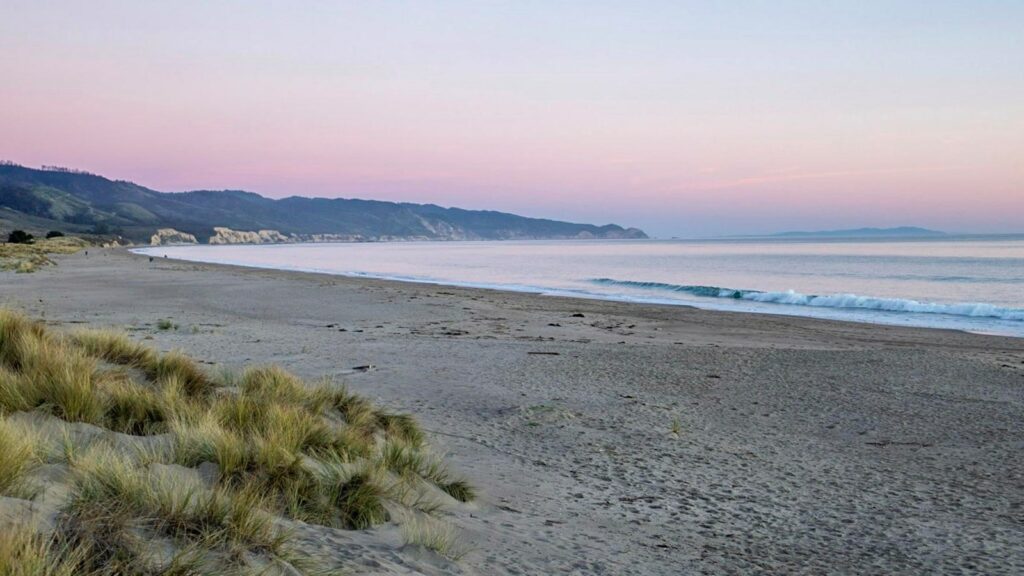“Boundaries limit and divide.They mark where one thing ends and another begins. Boundaries are also places of dynamic change…The San Andreas Fault is such a boundary, the division between two great tectonic plates: the Pacific Plate and the North American Plate.”
From the National Park Service, describing the geological underpinnings of the Point Reyes National Seashore
the San Andreas Fault
For the second year in a row, I visited Limantour Beach on the afternoon of my last day in Inverness. Many Point Reyes beaches are a cacophony of wild and dangerous waves, but Limantour is the quintessential leisure beach — a wide stretch of sand from dunes to ocean, the water shallow and relatively placid.
My first delight was the bounty of rocks washed up at the edge of the water. I picked up a yellow pentagon, its surface inscribed with a thin brown rim. Then a long, smooth rectangle with softly undulating striations like the sandstone of slot canyons. A flat white triangle smeared with a tinge of iron. A creamy egg-shaped stone with a pale yellow center. The dark skeleton of a sand dollar imprinted with the flower tentacles of its five-pointed star. On and on it went, my hands overflowing with treasure.
A mile down the beach, I made myself a nest in one of the dunes, and stashed my jacket, socks, and shoes. There was plenty of time to play before the sun would dip into the ocean. I had no human company as I splashed in the water this late in the day.
Behind the dunes resided a more narrow stretch of land. I could see many seagulls and ducks on the inlet, and was curious about this beach behind the beach. As I began to walk toward it, something moved in my peripheral vision, and I turned to see the waving hind flippers of an enormous seal. I apologized to its fitfully resting bulk and altered my route to take a wider detour through the brush.
And there it was, trotting across the back beach, the second bobcat of this trip. I stopped and had a few seconds to witness its essential being; the jaunty, silky way it moved when it thought it had this more private beach to itself. And then it noticed me and froze, and we stood and stared at each other from 25 yards apart.
(N.B. this picture was last year’s bobcat. I didn’t have my phone with me this year, which felt like part of what facilitated this unfolding)
Bobcats are fairly small for wild cats and generally not aggressive toward humans. I wasn’t worried, and I also remembered that it’s best to avoid sudden movements in the presence of a predatory animal, as their hunting instincts are aroused by motion.
As we beheld each other, I slowly lengthened my spine through the crown of my head, and breathed into my chest to make myself as physically and energetically large as possible. The bobcat crouched down, and I had a moment of wondering how that potential energy might be used. And then it propelled itself forward and hightailed out of there, leaving deep claw marks in the wet sand.
In the aftermath of that encounter, I hazily looped in the direction of my original destination. It was hard to have anything but bobcat on my mind. I made some lukewarm observations of the birds in the water, then went back to measure how far it was between the bobcat’s tracks and mine when we stopped together; to trace the paw-in-paw path it made before it saw me; and to marvel at the sloping sand ridges that were a testimony to the speed of its run. Then I walked back around the seal (yeah, no big thing, giant seal, I’d already seen plenty of them on this trip). I re-entered my dune nest to watch the sun slip away.
Limantour Beach NPS Photo / A. Kopshever
Just before sunset, I started back down the beach. There were still no other humans in sight, and I felt intimate with the vastness of the earth in all directions: the sea extending wide to the horizon, the shelf of the cliffs below the green mountains, the curve of the dunes. The sun filtered through the clouds, creating a pastel glow in the west and lighting up small slivers of matter in its path. The underbelly of an overhead seagull blazed pink, the thin veneer of water on the sand pearlized like the inside of an oyster shell. The ocean itself was a dark blue steel, tiny waves ripping horizontally across the surface.
Right before the sun went down, it briefly emerged from behind the clouds. A warm yellow glaze flooded the dunes and the sides of the cliffs for the last time that day, and then it was gone.
The generosity of this land, driven by the dynamism of the plates that comprise the San Andreas fault, continues to astonish and nourish me. I experience her like a portal with infinite doorways that constantly change and morph. When I surrender to that knowing and allow myself to flow with however the day and the land leads me, there she is, offering me her beauty in all its forms. The gift feels even more precious because it doesn’t belong to me, or to us. I’m just lucky to be here with what is emerging out of the brief detente in the ages-old friction between two shifting land masses.



